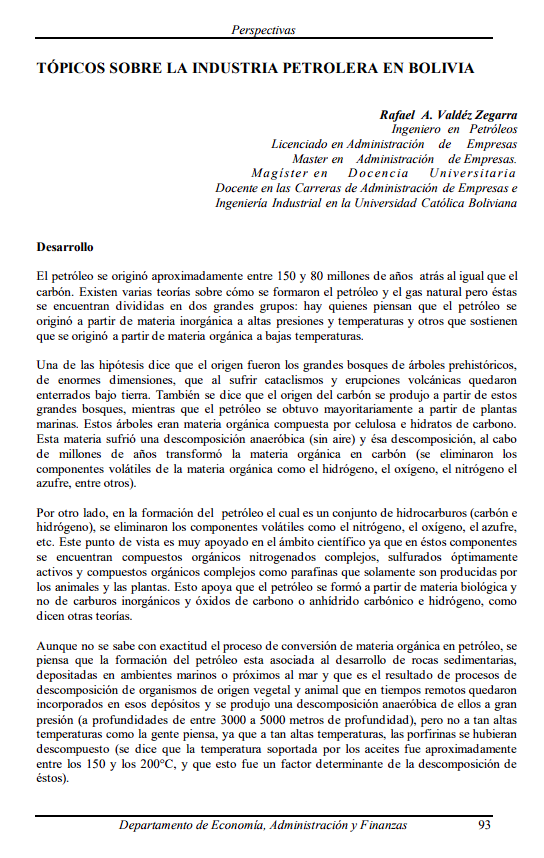Topics about the oil industry in Bolivia
DOI:
https://doi.org/10.35319/hree0q30Keywords:
Oil, Coal, Organic matter, FormationAbstract
Oil and coal were formed approximately 150 to 80 million years ago. There are two main theories about the origin of oil: one states it originated from inorganic matter under high pressure and temperature, and the other argues it comes from organic matter at lower temperatures. The most accepted hypothesis is that oil mainly formed from organic matter of marine plants, while coal came from prehistoric forests that were buried and underwent anaerobic decomposition. Over millions of years, this matter transformed by eliminating volatile components like hydrogen, oxygen, nitrogen, and sulfur. Oil formation is associated with sedimentary rocks deposited in marine environments, where organic matter decomposed under high pressure and temperatures between 150 and 200 °C.
Downloads
References
Banco Central de Bolivia (2005). Hidrocarburos: Discurso o desarrollo. Septiembre.
Consejo Mundial de Energía (2004). Reflexiones sobre la dinámica de los mercados de petróleo y gas natural. World Energy Council, febrero.
Dávila, Enrique (2004). La matriz energética. Mayo.
Energy Press. La Paz – Bolivia (varios números).
Illanes Pérez, Roberto. Caso Bolivia: La era del gas.
Inchauste Sandoval, Christian. (2010). La Bolivia del gas: Perspectivas hacia el 2010.
Inchauste Sandoval, Christian. La Bolivia del gas: El anillo boliviano de la industrialización.
Nueva Economía (2001). Desenvolvimiento económico de Bolivia en el siglo XX. La Paz, diciembre.
Nueva Ley de Hidrocarburos (2005). Ley N° 3058 del 17 de mayo de 2005. U.P.S. Editorial, La Paz – Bolivia.
YPFB, Vicepresidencia de Administración Contratos y Fiscalización (2005). Informe mensual. Marzo – abril.
YPFB (2005). Informe de reservas de hidrocarburos.

Downloads
Published
Issue
Section
License
Copyright (c) 2008 Revista Perspectivas

This work is licensed under a Creative Commons Attribution-NonCommercial-ShareAlike 4.0 International License.
La Revista Perspectivas de la Universidad Católica Boliviana, es una revista de acceso abierto, por lo tanto, es de libre acceso en su integridad. Está permitida su lectura, búsqueda, descarga, distribución y reutilización legal en cualquier tipo de soporte únicamente para fines no comerciales, siempre y cuando la obra sea debidamente citada.




